Rugby Coach Session Planning
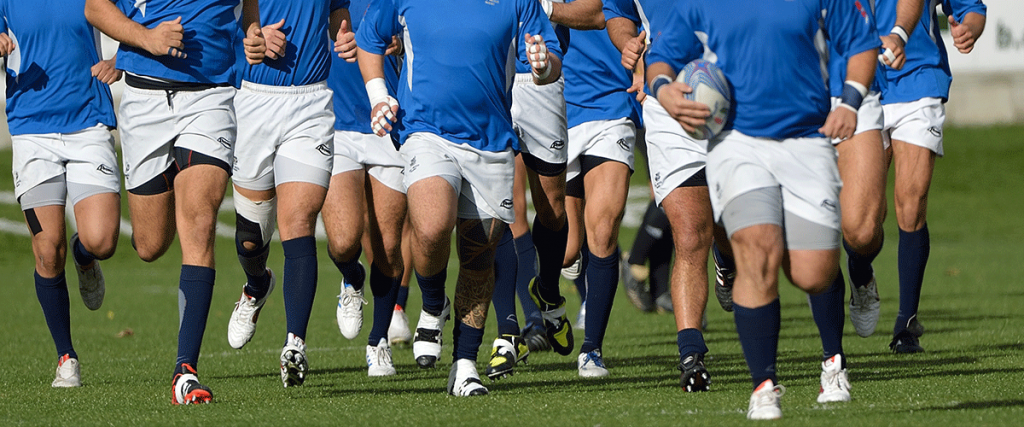
What to include in your practice plan
The frequency with which professional and semi-professional teams are able to practice allows them to attempt to master most aspects of the game with great specificity and intensity.
This means that in an individual practice session, teams may practice 2-3 aspects of the game, spending more time on each at a practice. There is no need to do everything in one or two sessions and there is not the need to prioritise team needs, concentrating on only the most important.
A lack of time at training, and the need to cover all aspects of play, is more often the case with amateur or junior teams, who practice once or twice weekly and play on the week-end.
This need not be the case and can be overcome with good organisation and management.
The first step is that, in order to decide what to include in your practice plan, the coach must analyse the team’s strengths and weaknesses, using a team profile pre-season and an analysis of the team’s matches during the season. When this is done systematically a wider range of needs and priorities can be identified.
Gathering information during a game, to both select players and analyse the play of a team, is often done by having the game videoed. This is good backup for opinions that are being formed, but it provides no immediate information in most coaching situations. Alternatives are to make notes during a game. The difficulty with this is that the coach may miss something while the notes are being written. Another method is to tape record comments for categorisation after the game. However, as opinions are formed during a game, a limited number of worthwhile comments can be formulated for use at half time.
Use the Principles of Play to Develop a Team Profile
The Principles of Play, both in attack and defence, are an excellent way of developing a team profile, a critical requirement for your session planning. This is because these principles explain what has to be achieved to be successful in a match. In this way the analysis is directly related to the mode of play.
A reminder, the principles of play are as follows:
Attack
- Gain Possession to..
- Go Forward with..
- The Support of Team Mates to..
- Maintain Continuity, exerting..
- Pressure to…
- Score Points.
Defence
- To Contest Possession and…
- Go Forward…
- Applying Pressure to…
- Prevent Territory being gained…
- Supported by or in Support of team- mates to…
- Regain Possession and…
- Counter Attack.
The Principles of Attack and Defence will enable the aspect of greatest need to be isolated so that they can be practised with greater specificity. This specificity is provided by key factor analysis or functional roles analysis as they explain how the principles can be achieved.
In the context of a session plan, key factors are a chronological list of actions, based on the principles of play, that should result in the outcome(s) being achieved. In rugby, key factors normally fall into two categories:
- Technical, which skill to practice.
- Tactical, which role to perform.
Key Factor Analysis: Attack
| Principle | Example of Skills for which Key Factor Analysis is Used | ||
|---|---|---|---|
| Attack | Individual Skills | Mini-Unit Skills | Unit Skills |
| 1. Gaining Possession | Jumping/Catching/ Picking up the ball. Kicking at restarts. | Retaining possession at restarts after a tackle or when the ball carrier is held | - Scrums - Lineouts |
| 2. Going Forward | - Evasive Running - Kicking - Passing | Support Play | Backline Attack |
| 3. Supporting Team Mates | - Passing - Running | Support Play | |
| 4. Maintaining Continuity | - Falling in the tackle - Contact skills | Second Phase Play - rucking - mauling | |
| 5. Creating Pressure to score Points | - Possession - Pace - (Field) Position | ||
Key Factor Analytics: Defence
| Principle | Example of Skills for which Key Factor Analysis is Used | ||
|---|---|---|---|
| Defence | Individual Skills | Mini-Unit Skills | Unit Skills |
| 1. Contesting Possession | Jumping/Catching/ Picking up the ball. Kicking at restarts. | Receiving possession at restarts after the tackle and when the ball carrier is held | - Scrums - Lineouts |
| 2. Going Forward | - Inside – out running | Alignment | Defence Patterns |
| 3. Applying Pressure | Defence Patterns | Defence Patterns | |
| 4. Preventing Territory being Gained | - Tackling | Support at the Tackle and in ruck and maul | |
| 5. Supporting | - Support in Defence | Support at the Tackle and in ruck and maul | |
| 6. Regaining Possession | - Catching - Picking up | Support at the Tackle and in ruck and maul | |
| 7. Counter Attack | - Catching - Picking up - Passing - Evasive running | Support | - Backline defence - Backline attack |
Define a player's functional role
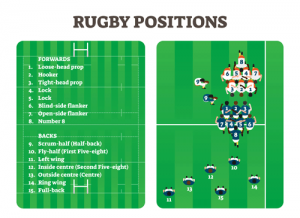
Every rugby player performs a variety of actions, or roles, during a game, we call these functional roles. A player’s functional roles change dependent on the identity of play e.g. set piece versus general or open play.
The use of the term “functional role” arose from a real need.
Seldom does a player’s positional name describe that player’s role in the game. Some denote a role at one identity of play e.g. at scrums we have props, locks and a hooker.
In others they are relics of a previous role e.g. stand off or fly half; while in others they denote no role e.g. No.8.
And yet in the jargon each coach develops we give players a role for each identity of play.
The name given to the role triggers a response in the player. This is because the role denotes an action. The term allows the player to identify the role they will do next.
Some are very obvious e.g. ball carrier, tackler, thrower (at lineout) and support player.
Others will vary depending on the team’s pattern at play especially in the dynamic identities of play. Names like catcher, lifter, block, link man and play maker come to mind.
The terms we use can vary so long as the word used identifies the players’ role and cues the player into the key factors for that role.
Obviously functional roles analysis involves decision-making. This is because the first action is to identify the role, the second is to perform it.
We also recommend you read our page on rugby player selection for further advice on how to select the best players for your game plan.
Applying the Principles of Play
Within themselves the principles are in sequential order, and as such they are an implied order of priority i.e. by getting the first principle performed as successfully as possible, it will be easier to perform the second principle and so on down the list.
Keep in mind needs can emerge equally from strengths and weaknesses. To improve, a weakness will ensure parity with opponents but not necessarily a competitive advantage. By enhancing a strength, the team will build on an advantage and the advantage that is created may result in a weakness not being exposed.
This applies particularly to possession in which a team’s strengths at scrum and lineout and the ability to retain possession may prevent defensive weaknesses from being exposed. The ability to kick accurately may prevent back attack weaknesses being exposed and vice versa.
However, it is important to understand that if a team concentrates on defence, their ball winning ability may be eroded, as may their ability to attack. Conversely the opposite will be true if too much emphasis is placed on attack. There must be priorities for both attack and defence.
Below is a match report based on the Principles of Play. The priority column enables coaches to isolate the areas of greatest need.
Example Game: Team A Vs Team B: Result - Half-time 10-17 :Full-time 23-20.
STRENGTHS
| ATTACK | Priority | Skill / Drill |
|---|---|---|
| Gaining Possession - L/O ball won and delivered cleanly. | ||
| Going Forward. - Attacking moves broke gain-line on most occasions. - Individually players showed the initiative to take the gap esp.10,12,14 & 11. | ||
| Supporting - The beginnings of using linear support appeared. | ||
| Continuity-Rucks/Mauls. - Mauling developed as the game went on. | ||
| Pressure. - A high percentage of kicks went to land and the chasing and receiving pattern made progress. But all must go forward in an arrowhead otherwise those that do go forward are out-flanked. | ||
| DEFENCE | Priority | Skill / Drill |
| Contesting Possession. To challenge their L/O (lineout): - Double jump first at #1 and then at #4 to force the overthrow - Jump behind the man at #4 so that you are not beaten by the back throw, forced on them by the jumper at #1. - Follow the opposition jumper’s feet as a 3- man jumping unit. | ||
| Go Forward. - From set pieces and phase play the pattern went forward together. - They didn’t break through our set piece and phase play patterns. | ||
| Apply Pressure. - Defence inside-out was applied limiting inside options. | ||
| Prevent terr. Gain.(tackling) - Tackling was strong without being offensive. - Generally available without being specific as to exact roles. | ||
| Regaining Possession. - Achieved in some situations. | ||
| Counter Attack - Well executed by #’s 15, 13, 11, 14. |
NEEDS
| ATTACK | Priority | Skill / Drill |
|---|---|---|
| Gaining Possession: Kick-offs - just gave possession away and also created a blind-side so that they had 2 sides of the field to attack. The accuracy of the kick is the main factor and if it can’t be accurate we should use an option that ignores retaining possession. - “Our points are only as good as the field position we achieve from the kick-off that follows. Quality points are the points we score and from the next plays we put ourselves to where we cannot be scored against. We need to work on how we can do this. Scrums. - The front row is just folding in and we are not muscling up as a bound 8 prior to contact. - In contact we need to sink and drive up into the opposition. Line-out. - If there tail-end players are “flooding” the mid-field when delivery is off the top then bring the ball down and drive. So long as the hindmost foot does not cross the gain-line we still retain the 10 metre off-side line. | ||
| Going Forward: General. - Our backs received the ball stationary and this doesn’t threaten opponents and keep the defence honest. We should stand deeper and receive the ball flat remembering to pull the pass back to re-create space for the next receiver. - By retaining our depth on the ball carrier we make it difficult for the opposition to interfere with the pass and give the receiver time and space to execute the best option. Phase Play. - This is aggravated at phase play as forwards not involved in retaining possession are competing with the backs in the first attacking line causing them all to “creep” forward flattening the line. - The forwards must be a second line of linear support. Red 1/2. - We must block in the line-out to prevent the pass from #9 to #10 being intercepted. Green 1. - #’s 10, 12 & 13 must be standing close and flat to draw the opposition and create space for #'s 11,14 & 15. Orange 1&2. - Make sure we do off-load to support and don’t “die” with the ball to keep the ball carrier in play. Penetrating. - When you penetrate and can’t go all the way you must keep the ball alive and maintain the pace of the play to do this draw a defender, to take him out, and pass to support. Decision-making. - From set pieces if an option is on but the ball doesn’t come immediately stick with the move as what the forwards have done prior to delivery doesn’t make it less effective. Kicking to Space. - Communicate where the space is, don’t rely on the kicker to see it. - If the wing is up on the blind-side, box kick if the space is unguarded. If the wing is back use the blind-side with the ball in hand. - Grubber kick into space, don’t use the grubber if they have support in numbers in the space you are kicking into. - Explain the flat kick into the “box”. Passing - Halfback passes weak, technique worth looking at. - First fives must stand wide enough to take full advantage of the length of the pass. General. - We broke the gain line but play did not continue through lack of support, not using support and slow delivery, from rucks especially. | ||
| Supporting: The Ball Carrier. - If the ball carrier is tackled high he must develop leg drive and not collapse to the ground allowing the “tackler” to claim the ball immediately. - Leg drive can occur as the player’s legs are not held and support can bind onto the player to create a maul and maintain forward momentum. - When the player does go to the ground this must be anticipated and the ball placed at arms length to ensure it is retained. - “Don’t die with the ball, use support and keep yourself in the move.” - Don’t make 50/50 passes. Support. - It may be necessary for the closest supporter to hold on to the ball carrier’s shorts so that the support is immediate. Support in the Counter-Attack. - When the ball carrier runs into “traffic” a player supporting laterally can easily be out of play when he changes direction. It is best to support linear so that the ball carrier can pass into the space he has drawn the defence away from it. - The same is the case when a penetrating ball carrier is isolated by lateral defenders. Passing. - Our players must learn to screen pass and to support linear down the field giving the ball carrier confidence to pass to the space. | ||
| Continuity - Rucks/Mauls: - Tackles invite penalties so that it becomes a lottery. Mauls and support play take away the risk in contact so long as the ball is delivered on the forwards move. Rucks - Delivery too slow because the ball carrier was not making the ball available, support was too slow and we were not driving past the line of the ball. Mauls. - Delay so that they look up. - Sink low and explode up as a unit. | ||
| Pressure: - Be patient in attack so that the attack is built, don’t force the play so that the ball is turned-over. - The best goal-kicker must be used. - We must reduce our penalties to single figures. | ||
| DEFENCE | Priority | Skill / Drill |
| Contesting Possession: - At kick-off we must be deep enough to move into the ball and not move back to it with the opposition driving us off the ball and getting possession. | ||
| Go Forward: - From scrums it is the flankers job to tackle anyone who runs from the base of the scrum. To do this they must watch the ball through the scrum and not look over it to make sure they are in a good tackling position. Phase Play. - We need to look at defending the maul. From the Tackle/Ruck: - Slow down delivery without penalty. - Practice the low tackle and ball recovery by tackle or immediate support player. - Defend patiently without offending using the guard dogs to set the line. - Challenge their #9 when the ball is out. - Number from the outside in so that more of our players are nearer the ball, which we can do as we will be more numerous than them. - Use outside in tackling to hit runners from their weaker side and to stop off-loading on the outside. | ||
| Apply Pressure: - Let’s look at numbering from outside in and tackling outside-in from phase play. | ||
| Prevent terr. Gain (tackling): - Let’s emphasise low tackling to prevent most mauls from forming and build into the tackle both the ball carrier claiming the ball and a support player claiming the ball. | ||
| Support-as above. | ||
| Regaining Possession-as above. | ||
| Counter Attack - Align in an arrowhead back from the point of the ball in the chasing group. - Come up spread wide so that the kick is their only option. |
Patterns of Play/Tactics
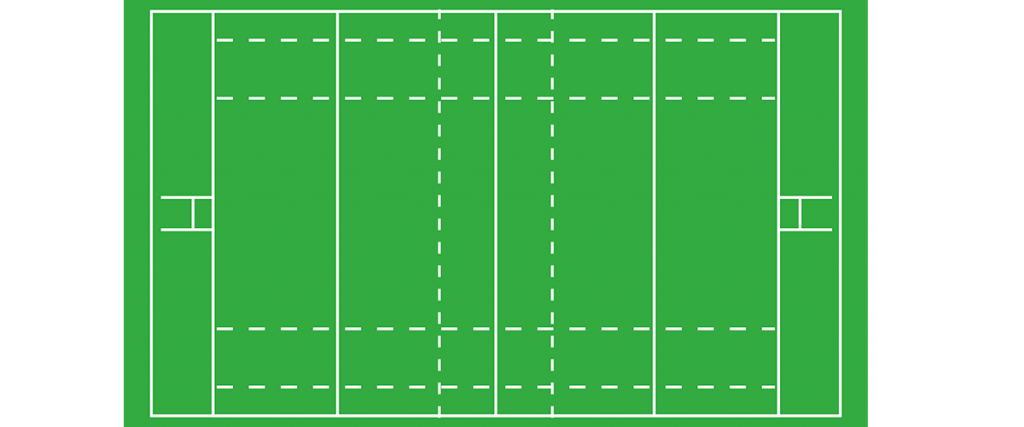
The patterns of play explain how the principles are to be achieved and the tactics are the change of emphasis in the patterns for the next game.
The emphasis is clearly a matter of the composition of the team (team profile) relative to that of opponents. This will change marginally for each game as the opposition changes.
Below are two examples of a team’s performance goals whose emphasis shows the marginal change in these goals from game to game. These performance goals are the tactical changes that are made to the patterns of play and explain what has to be done to achieve the game plan.
| # | Tactical Performance Goals | Player | Coach |
|---|---|---|---|
| 1. | Clear the defensive zone-chase and receiving patterns. | ||
| 2. | Dominate play in”options” zone-play into the defence. | ||
| 3. | Retain possession using “red” and “orange” options. | ||
| 4. | Once we get behind go wide into the space created. | ||
| 5. | If the defence is up kick behind and recover the ball. | ||
| 6. | Clean out at the tackle; use “physical” mauling. | ||
| 7. | Quick recycles to pick & go, using ”Rambo”,”Tyson” moves. | ||
| 8. | Tackle low and contest the ball. | ||
| 9. | Balance the defensive screen and move into tackles. | ||
| 10. | Play competitively, without conceding penalties/points. |
TACTICAL PERFORMANCE GOALS - GAME 2
| # | Tactical Performance Goals | Player | Coach |
|---|---|---|---|
| 1. | Accurate execution at set pieces-quality ball. | ||
| 2. | Retain the ball by getting numbers to the ball. | ||
| 3. | Ball carrier make the ball available. | ||
| 4. | Clear Zone 1 safely, dominate possession in zones 2 & 3. | ||
| 5. | In defence take away space, tackle low & stop off-loads. | ||
| 6. | Red & orange zone moves to break tackle line. | ||
| 7. | Continuity using pick & go, “Rambo”, “Tyson” | ||
| 8. | Once through go wide or reverse based on numbers. | ||
| 9. | After 3-4 phases and defence still set kick behind&chase. Receiving team also. | ||
| 10. | Deliver the ball on the forward move. In mauls ball at the back, grunt using leg drive. Use wedge & roll. |
In the above example, the left hand column is an indication of priorities, and the last 2 right hand columns gives the players and the coaches the opportunity to score the team’s performance on a scale of 1-10. Within these goals it is a useful exercise for the players to identify their own goals prior to the game and to score themselves after the game. These are then handed to the coach who will do the same and provide the player with constructive criticism.
The greater the time available, the more can be achieved by specifically designating the areas to be practiced at each individual training session.
A complementary approach is to take the entire practice time before the next game and allocate the time for each priority within this. This is often more satisfactory, as the coach doesn’t feel the pressure to cover all aspects in a single practice and avoids covering many things superficially.
If there is more time available, especially in the pre-season period, both practice times and preseason games can be taken in their entirety, thus allowing specific goals to be allocated an even more substantial time period.
The object of the practice is to identify where this emphasis should lie.
Some of the patterns may be:
- The contests for possession at scrum, lineout and kick- offs.
- Defence from scrum, lineout and the tackle.
- Continuity of play through support, rucks and mauls.
- Attack from scrum and lineout.
- Patterns of attack based on field position.
- Patterns of attack based on the source of possession.
- Defence following a tackle.
Each will involve achieving the balance between correcting errors in the pattern exposed in previous matches and emphasising those areas in which an advantage can be achieved in the next match.
Note that this will be a matter of emphasis within the teams’ patterns of play and will be the basis of the tactical plan for a particular match.
A working definition of Patterns of Play is that the patterns explain how the team’s Game Plan is to be achieved. For tactics, these are defined as the patterns for the forthcoming game. They are the how for now and are just a change of emphasis in the patterns.
Constructing a Rugby Practice Session
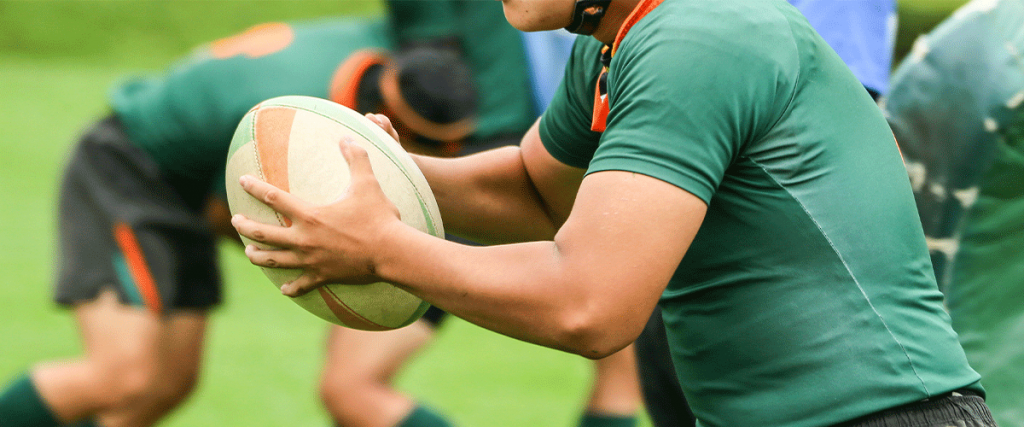
A practice session deals with three elements of preparation:
- Skill development
- Fitness / conditioning
- Decision making
The objectives of these are both to prepare the team for the next game and to maintain continual improvement for their whole season.
The specifics within the coaching period must achieve a balance between each of these elements.
This means that there will be an integration of fitness, skill and decision-making at practice, reflecting their combined effect in a game.
Until now we have identified the broad area that the practice should deal with. The task is now to break down this area into its components, starting from individual skills, building this through increasing numbers of players from pairs to threes to fours, fives, sixes, sevens and eights. With each step more players are involved and their complementary actions reinforce the decision-making components of the practice.
Ultimately, specificity will lead to position specificity, in determining who will do what, as the team approaches the tactics it will use in a match as it implements it’s game plan.
The Progression of Intensifying the Practice
The combination of fitness, skill development and decision-making creates the complementary elements that intensify the practice.
To develop fitness the progression during a season will be from aerobic fitness and flexibility to strength and speed and finally to anaerobic fitness and power.
Each of these will impact on the composure of the player, the ability to accurately perform the skills and to make decisions.
Fatigue does make cowards of us all and the link between the ability to succeed in the other two components and levels of fitness cannot be over-emphasised.
The intensification of skills practice initially comes from performing the basic individual skills many, many times.
These must be performed over and over again with the intensity being accelerated by a number of factors. The most common of these are:
- A reduction in the space available i.e. the performance of a skill in a smaller area with greater congestion created by the number of players performing the skill nearby or in the same space. The most influential skills of the game, those that impact most on play, are those that are performed close to, if not in contact with, other players.
- A reduction in recovery time, so that players perform the skill with the progressive reduction in the time the player has to catch breath.
- An increase in the level of opposition from time and space being the only “opposition” to some opposition to match play i.e. full-on opposition, as you would have in a game.
Initially it may be necessary to have more attackers than defenders when practising attack and the reverse when practising defence. This builds confidence and allows options to be learned. Eventually the reverse may be used with the attack or defence being overloaded with greater numbers. For most teams this is rare. If this is done it is important to monitor the length of time “in overload” so that skill levels and accurate decision-making are maintained.
When intensifying attack care must be taken to regulate the level of opposition so that it enhances and does not erode decision-making in particular.
Whatever may be practiced in opposed training, the keys are to regulate the opposition to achieve the level of decision-making desired and secondly to convince the opposition that they are doing a vital job for the team by maintaining the intensity of the practice. Reserves are often used as opposition but they can easily lose interest and need to be kept motivated.
This may be in attack when defence is practiced and the reverse when attack is being practised. To let the opposition decrease or increase the intensity or at worst play outside the laws of the game is counterproductive. It may be that the play needs refereeing – other than the obvious this has the additional benefit of allowing the coaches to concentrate on the play.
Decision-making
Many decisions that are made in a game are done with great frequency e.g. who to tackle, when to pass, how to support, who to throw the ball to in a lineout, but many are not. They occur too infrequently in a game for the level of success to improve, especially in the short term.
Examples of these are which attacking move to use, which defensive pattern to use should there be more than one to choose from, what form of attack to use, and whether to take a gap or find support.
To meet the need of these less frequent, but more important decisions, situations must be created at practice that duplicate these decision-making scenarios, time and time again. Initially, the recovery time can be longer to enable the player to be composed. Once a high degree of proficiency is reached the recovery time can be reduced, increasing the intensity.
Secondly, because successful decision-making can be difficult to achieve immediately, and becomes frustrating, it can be better to practice it in small “bites” and to return to it often. This gives the players time to reflect so that the decisions are more accurate next time.
By far the most frequent decision players make is to decide on the individual skill they will use from the menu available to complement the action of team-mates.
The aim is therefore to increase the menu of skills and to create the player who can make the best choice and perform the skill without hesitation.
The key skill here is “handedness” or the ability to use both hands, both shoulders – the ability to use the less familiar side of the body as comfortably as the familiar side. For most players this is the left, with the familiar side being the right.
At practice the coach has the one opportunity to ensure players practice their less familiar side – something they may not do themselves if not supervised.
Once the parts have been practiced and individuals brought together in mini-units of increasing size, the team will need to play to its patterns of play and ultimately to its tactics for the forth-coming match. This is best achieved by linking the practice to field position and linking each aspect of play to the team’s options in that field position.
Practice Drills
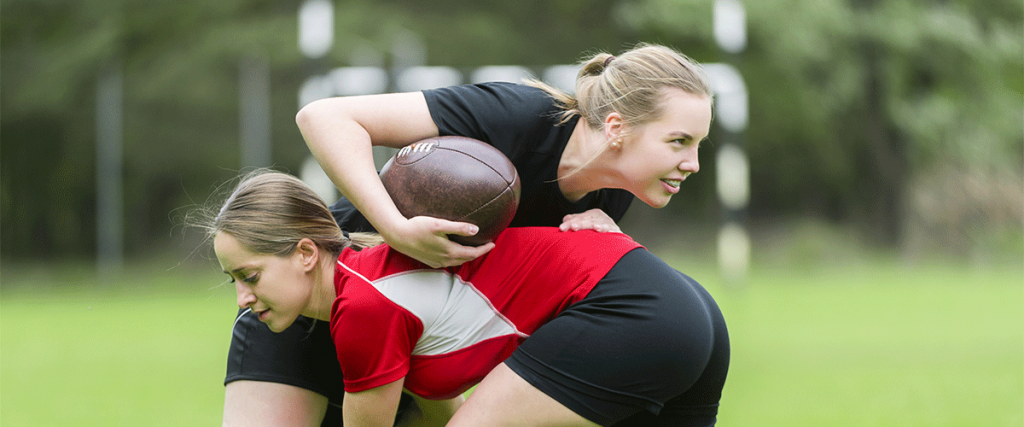
If a successful team uses a drill, has a practice routine, has a particular pre-match routine or indulges in “conventional wisdom” superstitions other teams are tempted to copy these routines.
An example of this is the Super Rugby team who refused to warm up under the lights because they had never done so before and have yet to lose a game. There was no good reason for this, other than them winning. There are good reasons for getting accustomed to the lights before play begins. All it took was for the players to question the routine which resulted in them being given a free choice, with some warming up under the lights while others did not. When this team did lose, there were far more fundamental reasons for the loss than where they warmed up.
If there is a good reason for doing something, a reason that fits the personnel that make up the team, then use it. The flaw lies in copying, and overlooking the obvious fact that no two teams are the same and what is successful for one is not necessarily successful for any other.
Consequently, drills must be based on the specific needs of the team so that what is practiced progresses the team to the patterns of play and tactics. Players too often separate what is done at practice from what occurs in a game, they don’t make the connection. Time is too short for the team to practice anything that is not directly linked to the patterns and tactics.
Each part of the practice must be able to be directly uplifted and placed in the context of a match with minimal adjustment.
The drill can be part of the pre-match warm-up so that the warm-up really becomes part of a 2 hour game of which the match occupies one and a half hours.
Decision-making drills are often difficult to create, but they are the most relevant to the game and developing them is worth the effort. Match analysis enables teams to easily counter moves that are done by rote, by robots who do 065BD for variety or because it worked last time.
Once again it is a matter of intensity. It is more profitable to practice a limited number of moves and spend time reading the options based on the behaviour of opponents. To practice many moves in the hope that one will work is spreading risks too thinly.
The lazy coach fails to plan and as a consequence is planning for failure.
